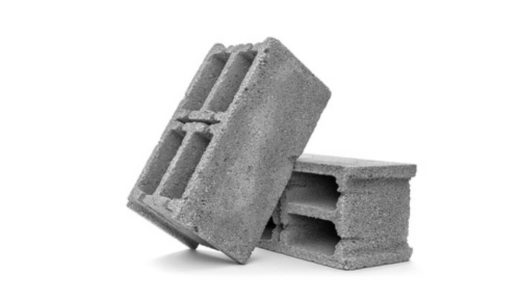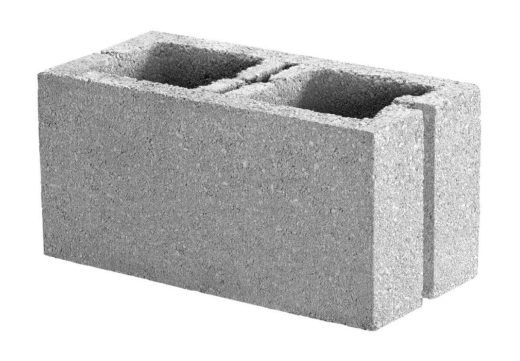Introduction:
When burning wood or coal to heat houses was the main way to do it, there were a lot of cinders. In the 1850s, this overproduction made a new block type. A normal house could make a lot of cinder waste in one winter, making it a cheaper aggregate. Concrete has been used for hundreds of years. Romans, Greeks, and Egyptians were the first to use simple concrete blocks. Historians even think that some of the pyramids were built with simple concrete.
Romans used concrete mortar as early as 200 AD. To make concrete, the Romans used local ingredients. Roman construction needed strong materials during this time, so concrete was a great choice for their infrastructure and buildings. In 1824, a British cement maker named Joseph Aspdin got a patent for modern concrete. Aspdin came up with the recipe for cement, which we still use today. The product he developed is called Portland cement. Harmon S. Palmer made the first hollow concrete block in the U.S. in 1890. By 1900, Palmer had gotten a patent for his idea. These concrete blocks were so heavy that one person couldn’t carry them alone.
What are Cinder Blocks?

Fig1: Cinder Block
Courtesy: housing.com
Cinder blocks, or concrete masonry units (CMUs), are rectangular building blocks made from a mixture of Portland cement, aggregate (such as sand or gravel), and water. They are widely used in construction for building walls, foundations, and other structural elements. Cinder blocks are named after the material they originally contained—cinder. Cinder is ash that remains after coal or other fuels have burned. In the past, cinder blocks were made using cinder as one of the components, but modern blocks are typically made with concrete.
These blocks are characterized by their hollow centers, which provide insulation and make them lighter than solid concrete blocks. The hollow cores can be filled with concrete or other materials for strength and stability. Cinder blocks are versatile and durable, making them popular for various construction projects. They are relatively inexpensive and offer good fire resistance and sound insulation properties. Cinder blocks can be stacked and mortared together to create sturdy walls, and they can also be used for decorative purposes in landscaping and outdoor projects.
What are Concrete Blocks?

Fig2: Concrete Block
Courtesy: .yorkbuilding.com
Concrete blocks are precast construction materials from cement, aggregates (such as crushed stone or sand), and water. They are commonly used in various building projects for their strength, durability, and ease of installation. Concrete blocks come in different sizes, shapes, and compositions to suit different construction needs. The most common type of concrete block is the hollow core block, with hollow voids running through its length. These voids reduce the weight of the block while maintaining its strength. Other types include solid blocks, which do not have voids, and interlocking blocks, which have tongue-and-groove features for easy stacking and improved stability.
Concrete blocks offer several advantages in construction. They provide structural support and can be used to build load-bearing walls, retaining walls, foundations, and other structural elements. They are resistant to fire, pests, and weathering, making them suitable for interior and exterior applications. Concrete blocks also have good thermal insulation properties, which help regulate indoor temperatures and improve energy efficiency. In construction, concrete blocks are typically laid in a running bond pattern, where blocks are staggered to increase stability. Mortar binds the blocks together, creating a solid wall or structure. The surface of the blocks can be left as is for a textured appearance, or they can be plastered, painted, or covered with other finishes to achieve the desired aesthetic effect.
Differences between Cinder Blocks and Concrete Blocks:
Cinder blocks and concrete blocks are both masonry units used in construction, but they have some differences in composition, strength, appearance, durability, cost, and weight
(i) Composition: Cinder blocks, also known as concrete masonry units (CMUs), are typically made from a mixture of cement, sand, and coal cinders or ash. The composition of cinder blocks may vary slightly depending on the manufacturer, but the basic ingredients remain the same. The coal cinders or ash give cinder blocks their characteristic gray color. Concrete blocks are primarily made from Portland cement, aggregate (such as sand or gravel), and water. The proportions of these ingredients can vary depending on the desired strength and characteristics of the blocks. Concrete blocks come in various sizes, shapes, and finishes to suit different construction needs. Both cinder blocks and concrete blocks are molded into shape using a concrete block machine, and they undergo a curing process to gain strength before they are used in construction.
(ii) Strength: Choosing between cinder and concrete blocks is crucial for every building project. Cinder blocks are made from organic materials and are often regarded as weaker than concrete. However, the strength of cinder blocks can range widely depending on the specific clay and sand mixture that goes into their production. Concrete blocks are far more durable than cinder blocks, which have a maximum Compressive Strength of 1,500 psi. In addition, concrete blocks often need significantly less upkeep than cinder blocks. Therefore, concrete blocks are the best option when strength is the most important factor in a building project.
(iii) Appearance: Cinder blocks, known as concrete masonry units (CMUs), are typically gray or light brown. They have a rough and porous texture, resembling a grid-like pattern with open cells. Cinder blocks are made from Portland cement, aggregates (gravel or crushed stone), and coal cinders or ash. The presence of cinders or ash gives them a lighter weight compared to solid concrete blocks.
On the other hand, concrete blocks have a denser and smoother appearance. They are usually gray or light tan. Concrete blocks are made from a blend of Portland cement, sand, and aggregates. The mixture is poured into molds and compacted under pressure to create solid blocks. Concrete blocks are heavier and stronger than cinder blocks, making them suitable for load-bearing structures.
(iv) Durability:It is important to consider when considering cinder blocks and concrete blocks. Ensuring the building blocks you use in your project will last is important. Cinder blocks are lightweight aggregates and don’t last as long as concrete blocks. Even though cinder blocks are strong enough for many jobs, concrete blocks are usually stronger, last longer, and are more resistant to weathering and wear. Concrete blocks are much denser than cinder blocks and are better at withstanding high temperatures, bad weather, and physical effects. Concrete blocks are also known for being resistant to low temperatures and not absorbing water, which makes them great for many uses. They can usually stand up to fire and weather and wear better than cement blocks.
(v) Cost: Cinder blocks are often less expensive to produce compared to concrete blocks because they incorporate waste materials like coal cinders or ash, which are usually available at a lower cost. Concrete blocks require a more standardized mixture of cement, sand, and aggregate, which can impact their manufacturing cost. The availability of cinder and concrete blocks in your area can influence their cost. If one type of block is more readily available or in higher demand than the other, it can affect the pricing.
(vi) Weight: Cinder blocks have a relatively low density compared to concrete blocks. The lower density is due to the presence of cinders, which are lightweight and porous, resulting in a lighter-weight block. The exact weight of a cinder block can vary depending on its size and specific composition, but on average, a standard cinder block weighs around 28-35 pounds (12.7-15.9 kilograms).
On the other hand, concrete blocks are made from a mixture of cement, aggregates (such as sand or crushed stone), and water. The absence of cinders in concrete blocks makes them denser and heavier than cinder blocks. Like cinder blocks, the weight of concrete blocks can vary depending on their size and composition. A typical concrete block weighs approximately 38-50 pounds (17.2-22.7 kilograms), making it slightly heavier than a cinder block.
Conclusion:
There are benefits and drawbacks to using both cinder and concrete blocks. The drying time for cinder blocks is shorter, and the price is lower, but the blocks are weaker and can shatter easily. Concrete blocks are more expensive and take longer to dry than their clay counterparts, but they are stronger, last longer, and are less likely to crack. Both materials have their uses in construction, and the decision should ultimately come down to the homeowner’s tastes, priorities, and budget. Both materials are sturdy, long-lasting, and adaptable, making them great for building walls and bases.
References:
1. C. (2018, March 26). The Difference between Cement, Cinder, and Concrete Blocks. Cobra Stone INC. https://www.cobrastone.com/what-is-the-difference-between-a-cement-block-cinder-block-and-a-concrete-block/
2. DiFabio, E. (2022, June 23). Concrete Block Vs. Cinder Block: What to Choose? GIG calculator Articles. https://www.gigacalculator.com/articles/concrete-block-vs-cinder-block/
3. Sokol, E. (2020, June 21). Cinder Block vs Concrete Block: What Is the Difference? Plasticine House. https://plasticinehouse.com/cinder-block-vs-concrete-block/
4. Difference between Concrete Blocks and Cinder Blocks (2023). (2019, February 6). HPD TEAM. https://www.hpdconsult.com/difference-between-concrete-blocks-and-cinder-blocks/
5. Cinder Block vs. Concrete Block: Which to Choose? – Handyman’s World. (2022, June 16). Handyman’s World. https://handymansworld.net/cinder-block-vs-concrete-block/
6. Cinder Block vs. Concrete Block. Differences, Pros & Cons. (2022, July 3). Engineering Web. https://www.enggweb.com/cinder-block-vs-concrete-block/
If you have a query, you can ask a question here.



interesting